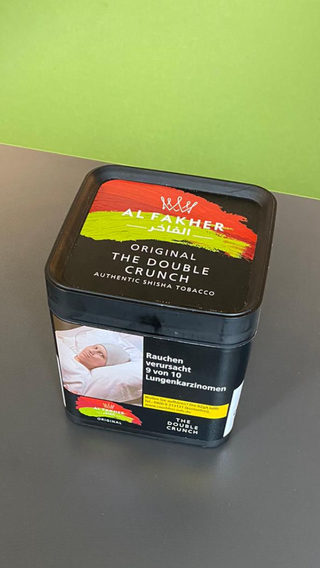
A cigarette is a narrow cylinder containing a combustible material, typically tobacco, that is rolled into thin paper for smoking. The cigarette is ignited at one end, causing it to smolder; the resulting smoke is orally inhaled via the opposite end. Cigarette smoking is the most common method of tobacco consumption. The term cigarette, as commonly used, refers to a tobacco cigarette, but the word is sometimes used to refer to other substances, such as a cannabis cigarette or an herbal cigarette. A cigarette is distinguished from a cigar by its usually smaller size, use of processed leaf, and paper wrapping, which is typically white. Most modern cigarettes are filtered, although this does not make the smoke inhaled from them contain fewer carcinogens and harmful chemicals.

Tobacco smoking is the practice of burning tobacco and ingesting the resulting smoke. The smoke may be inhaled, as is done with cigarettes, or simply released from the mouth, as is generally done with pipes and cigars. The practice is believed to have begun as early as 5000–3000 BC in Mesoamerica and South America. Tobacco was introduced to Eurasia in the late 17th century by European colonists, where it followed common trade routes. The practice encountered criticism from its first import into the Western world onwards but embedded itself in certain strata of a number of societies before becoming widespread upon the introduction of automated cigarette-rolling apparatus.The World Health Organization states secondhand smoke—that from other people's smoking—causes 1.3 million of the 8 million annual deaths caused by smoking.

A hookah, shisha, or waterpipe is a single- or multi-stemmed instrument for heating or vaporizing and then smoking either tobacco, flavored tobacco, or sometimes cannabis, hashish and opium. The smoke is passed through a water basin—often glass-based—before inhalation.

Rolling paper is a specialty paper used for making cigarettes. Rolling papers are packs of several cigarette-size sheets, often folded inside a cardboard wrapper. They are also known as 'blanks', which are used to encase tobacco or cannabis. It may be flavoured.

Nicotine replacement therapy (NRT) is a medically approved way to treat people with tobacco use disorder by taking nicotine through means other than tobacco. It is used to help with quitting smoking or stopping chewing tobacco. It increases the chance of quitting tobacco smoking by about 55%. Often it is used along with other behavioral techniques. NRT has also been used to treat ulcerative colitis. Types of NRT include the adhesive patch, chewing gum, lozenges, nose spray, and inhaler. The use of multiple types of NRT at a time may increase effectiveness.

Chain smoking is the practice of smoking several cigarettes in succession, sometimes using the ember of a finishing cigarette to light the next. The term chain smoker often also refers to a person who smokes relatively constantly, though not necessarily chaining each cigarette. The term applies primarily to cigarettes, although it can be used to describe incessant cigar and pipe smoking as well as vaping. It is a common indicator of addiction.

Tobacco products, especially when smoked or used orally, have negative effects on human health. Researchers have addressed concerns about these effects for a long time. They have focused primarily on cigarette smoking.

A hookah lounge is an establishment where patrons share shisha from a communal hookah or from one placed at each table or a bar.

An electronic cigarette (e-cigarette) or vape is a device that simulates tobacco smoking. It consists of an atomizer, a power source such as a battery, and a container such as a cartridge or tank filled with liquid. Instead of smoke, the user inhales vapor. As such, using an e-cigarette is often called "vaping". The atomizer is a heating element that vaporizes a liquid solution called e-liquid, which quickly cools into an aerosol of tiny droplets, vapor and air. E-cigarettes are activated by taking a puff or pressing a button. Some look like traditional cigarettes, and most kinds are reusable. The vapor mainly comprises propylene glycol and/or glycerin, usually with nicotine and flavoring. Its exact composition varies, and depends on several things including user behavior.

Muʽassel, or maassel, is a syrupy tobacco mix containing molasses, vegetable glycerol and various flavourings which is smoked in a hookah, a type of waterpipe. It is also known as "shisha".

Smoking in India is one of the oldest industries and provides employment to more than five million people directly and indirectly. India is the second-largest producer of tobacco in the world. Smoking has been known since at least 2000 BC when cannabis was smoked and is first mentioned in the Atharvaveda. Fumigation (dhupa) and fire offerings (homa) are prescribed in the Ayurveda for medical purposes and have been practiced for at least 3,000 years while smoking, dhumrapana has been practiced for at least 2,000 years. Tobacco was introduced to India in the 17th century. It later merged with existing practices of smoking.

Regulation of electronic cigarettes varies across countries and states, ranging from no regulation to banning them entirely. As of 2015, around two thirds of major nations have regulated e-cigarettes in some way.
The use of electronic cigarettes (vaping) carries health risks. The risk depends on the fluid and varies according to design and user behavior. In the United Kingdom, vaping is considered by some to be around 95% less harmful than tobacco after a controversial landmark review by Public Health England.

The chemical composition of the electronic cigarette aerosol varies across and within manufacturers. Limited data exists regarding their chemistry. However, researchers at Johns Hopkins University analyzed the vape clouds of popular brands such as Juul and Vuse, and found "nearly 2,000 chemicals, the vast majority of which are unidentified."

A vape shop is a retail outlet specializing in the selling of vaping products, though shops selling derived psychoactive cannabis products have increased since the passage of the 2018 Farm Bill. There are also online vape shops. A vape shop offers a range of vaping products. The majority of vape shops do not sell vaping products that are from "Big Tobacco" companies. In 2013, online search engine searches on vape shops surpassed searches on e-cigarettes. Around a third of all sales of vaping products take place in vape shops. Big Tobacco believes the independent vape market is a threat to their interests.

Pod mods are a type of electronic cigarette used to vape nicotine through a mouthpiece connected to the body of the device by magnets. These devices are a newer generation of e-cigarettes that are often marketed to a younger crowd that do not wish to attract attention gained through regular e-cigarettes or traditional tobacco-burning cigarettes. Pod mods contain a disposable cartridge and coils.
Electronic cigarettes are marketed to smoking and non-smoking men, women, and children as being safer than cigarettes. In the 2010s, large tobacco businesses accelerated their marketing spending on vape products, similar to the strategies traditional cigarette companies used in the 1950s and 1960s.

Nicotine pouches, also called modern oral nicotine products, are white pouches containing nicotine among other ingredients. They do not include tobacco leaf, dust, or stem. The nicotine may either be derived from tobacco plants or may be synthetic. Nicotine pouches are described as either similar to or a tobacco-free version of snus.

Zyn is a brand of nicotine pouches originating in Sweden. Zyn pouches are designed to be placed between the gum and upper lip and are available in several variants with different nicotine strengths and flavors. Unlike snus, these pouches contain no tobacco.















